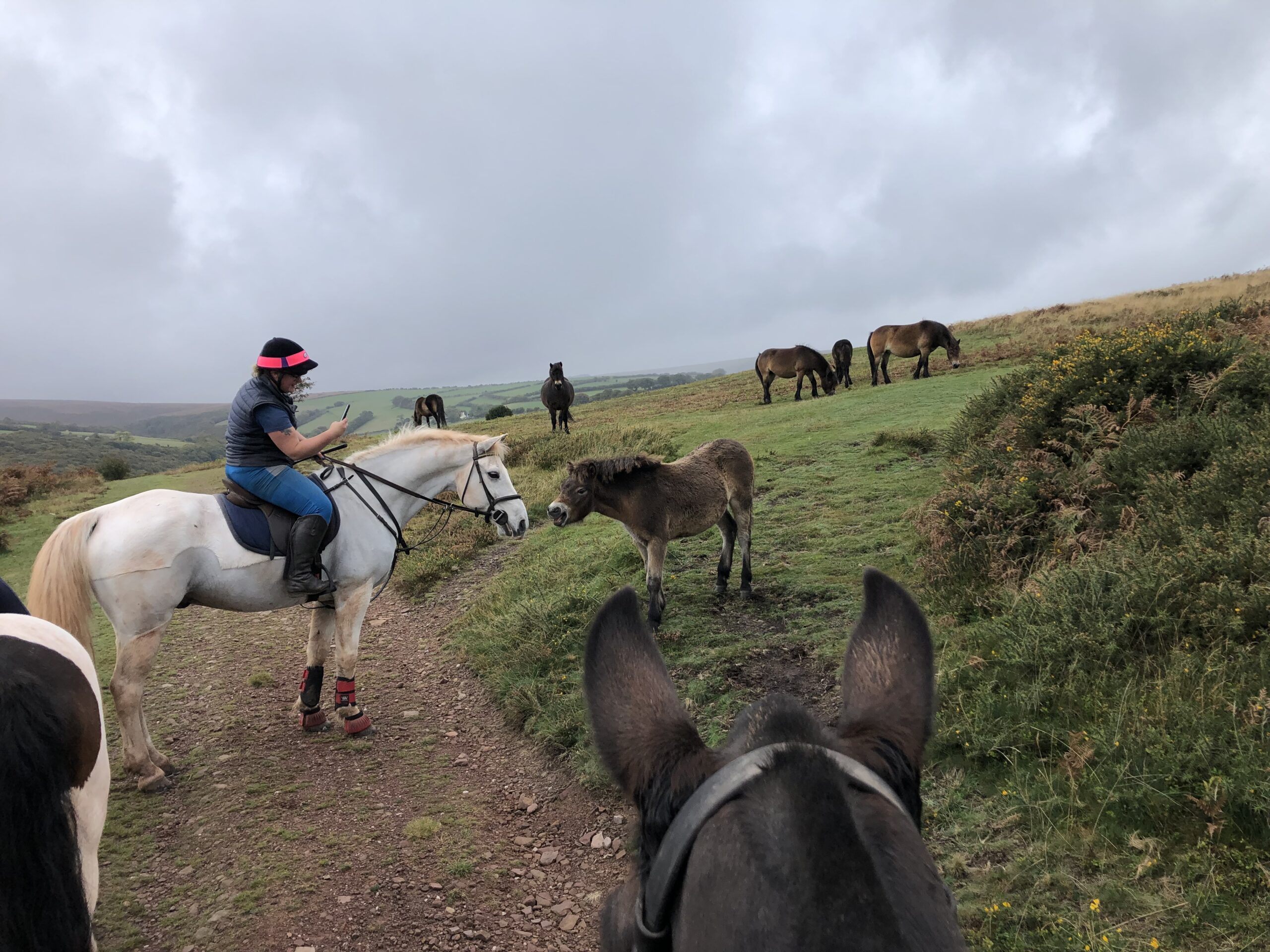A chatty Exmoor foal

The young colt was surprisingly bold for a semi-wild Exmoor pony. He approached the horses we were riding, clapping his teeth eagerly. This exaggerated mouthing, or “foal chat”, signalled his babyhood and is something all young horses do to their elders until they reach puberty at about 18 months.
He was part of a small group of mares and foals grazing near the summit of Ley Hill, where the milder weather of Porlock gives way to the harsher, wetter climate of the open moor. We had ridden up from West Luccombe, through steep combes sheltered with oaks where it still felt like late summer despite the red berries clotting the hollies. Up on the hill, however, autumn had arrived. Looking across cloud-filled Cloutsham to the purple bruise of Dunkery Beacon, we could hear a red deer stag bellowing in rut.

The ponies were prepared for the change in seasons, their coats thickening for the cold weather ahead. In autumn, Exmoors shed their sleek summer coats and grow a double layer of fur. This consists of a waterproof top pelt of hard, greasy hair and a soft underlayer of fine, dense insulation. Their tails have a fan of hair at the top to funnel off rain or snow.
They are superbly adapted to their environment too, with colours that blend into the winter browns of bracken and heath. This group were variations of toasted hazelnut, black treacle and peat, with the paler muzzles and lighter patches around the eyes that are so characteristic of the breed. The fluffy little colt was distinctly foxy, with chocolate fading into russet on his shoulders, belly and rump, while the ends of his flappy mohican mane were singed blond.

Exmoor ponies are sometimes claimed as prehistoric survivals, descendants of the wild horses found in Britain after the last ice age. The reality is more prosaic – while they are an ancient breed, their similarity to horses in cave paintings was deliberately enhanced by selective breeding. Genetic testing shows them to be Equus caballus, the domestic horse species. A truly wild colt would not have come anywhere near us.
First published in The Guardian’s Country Diary column 3 November 2022.





